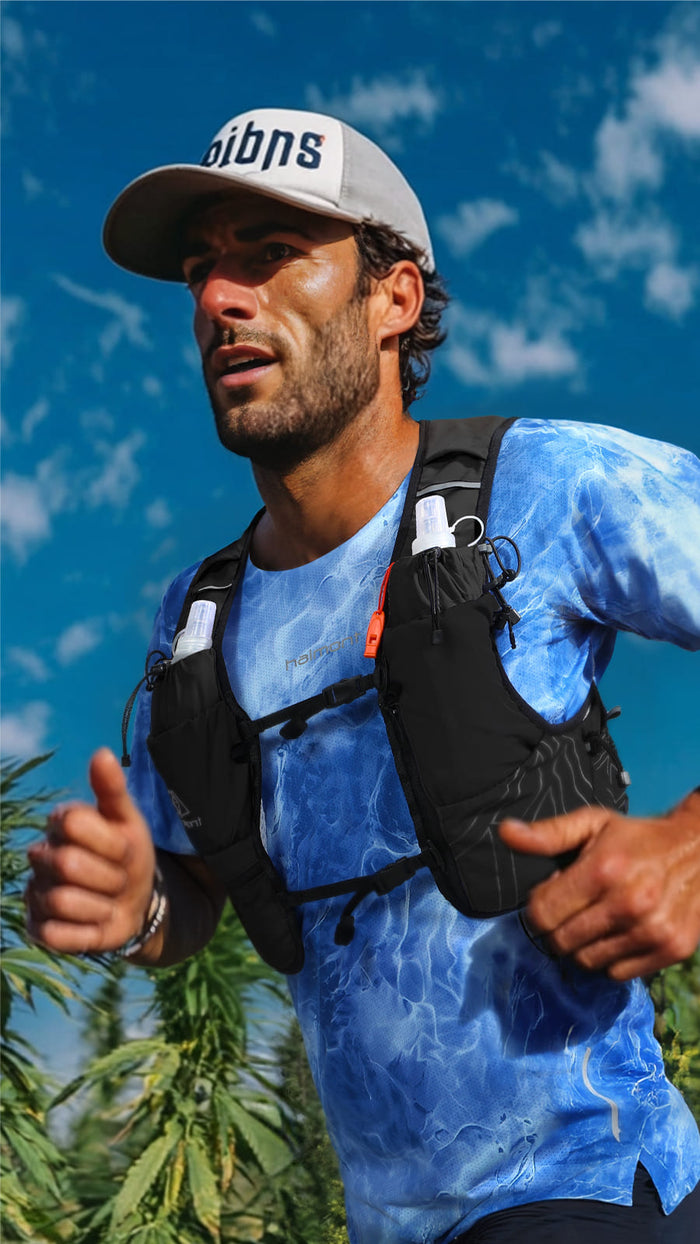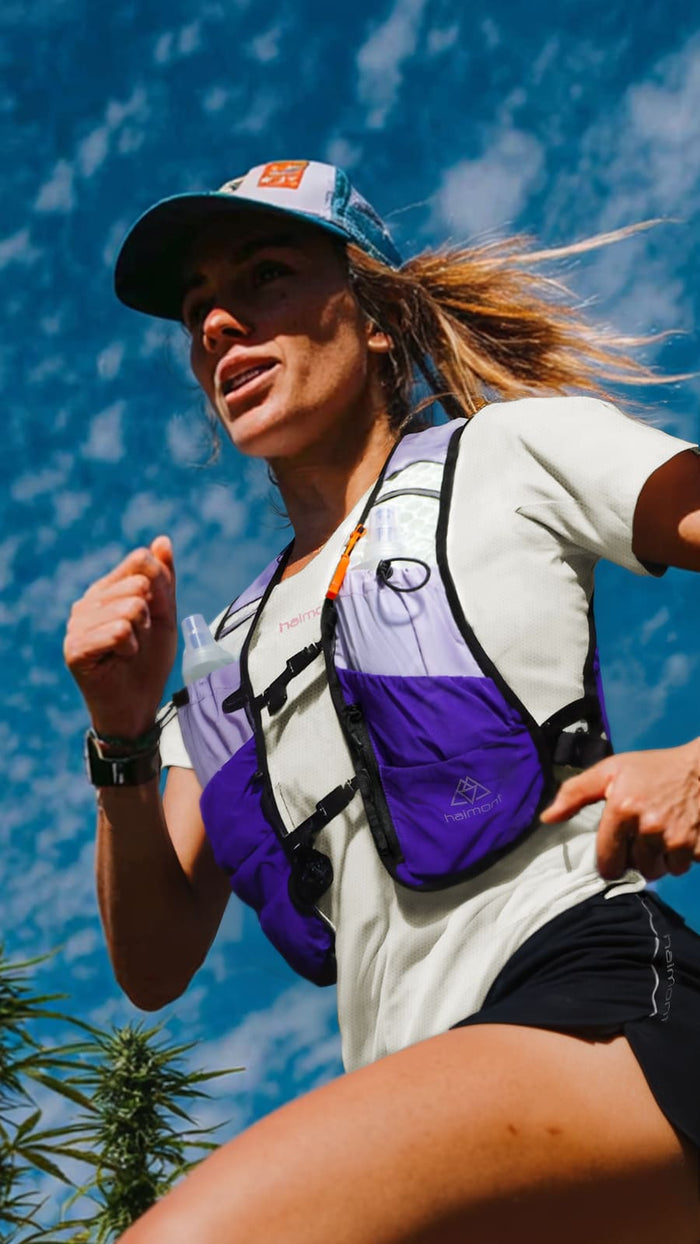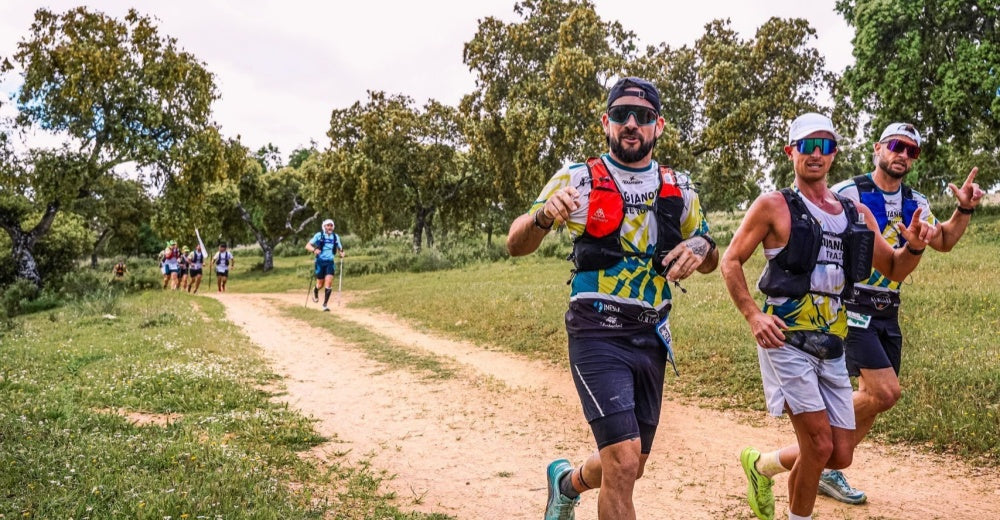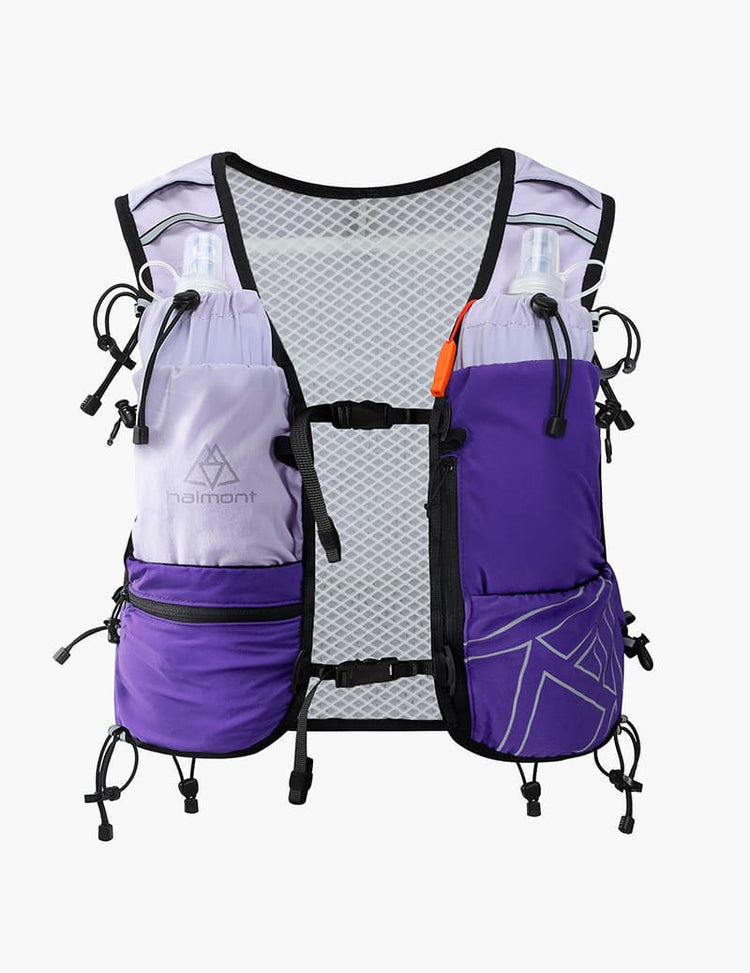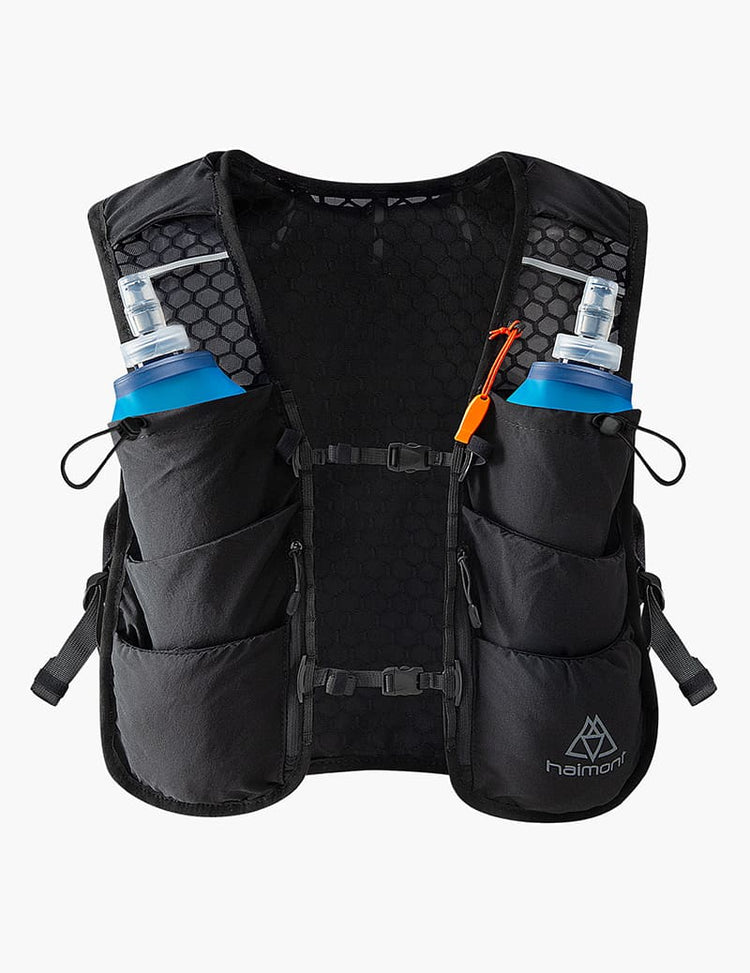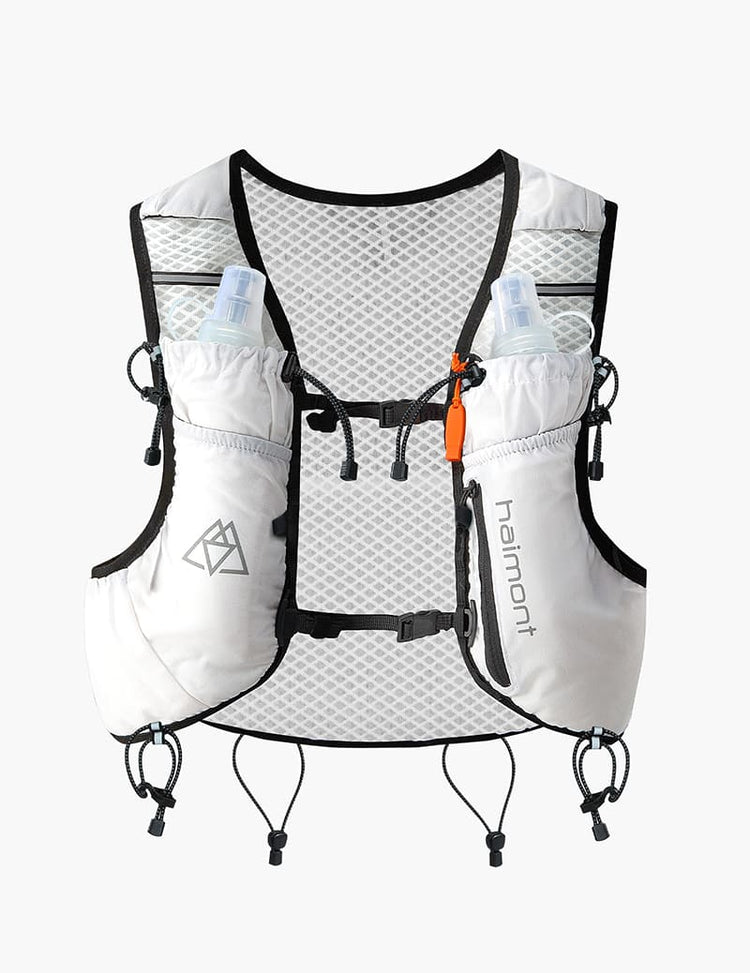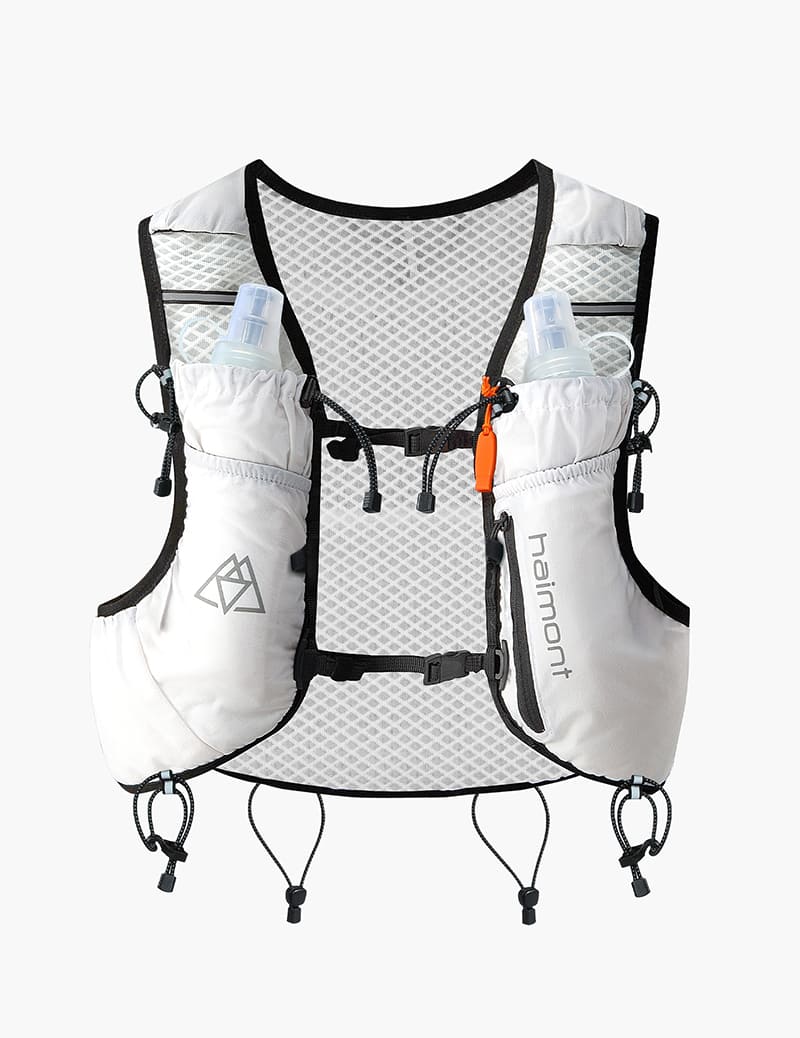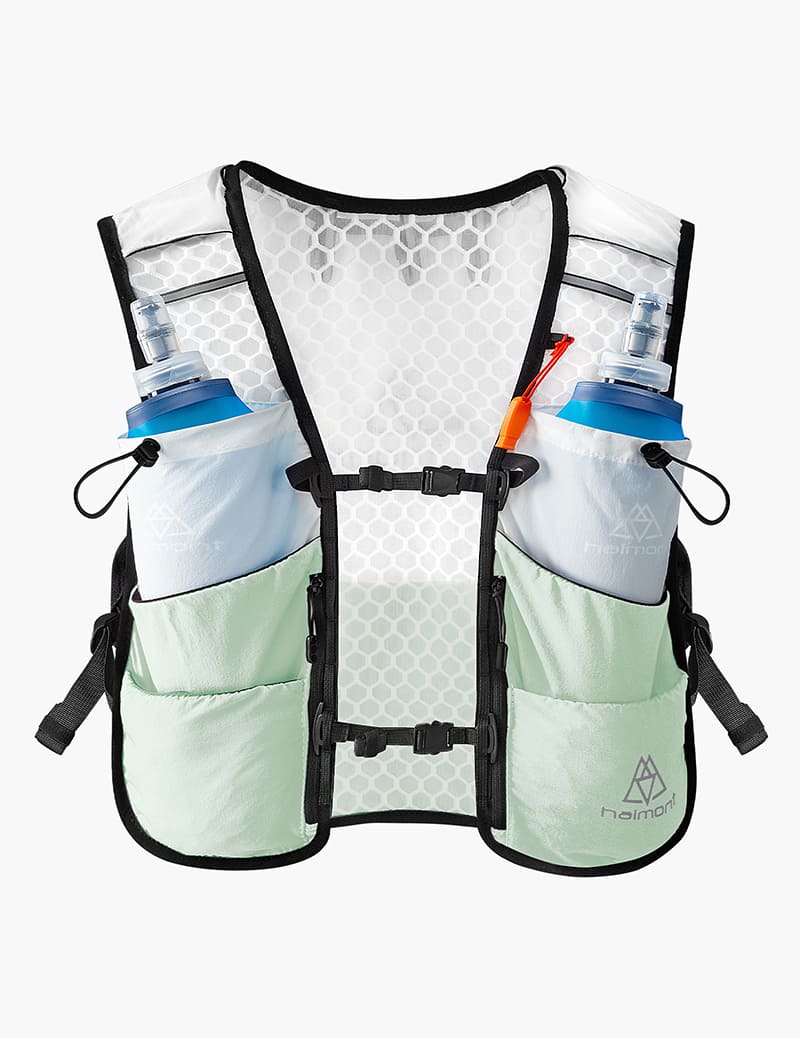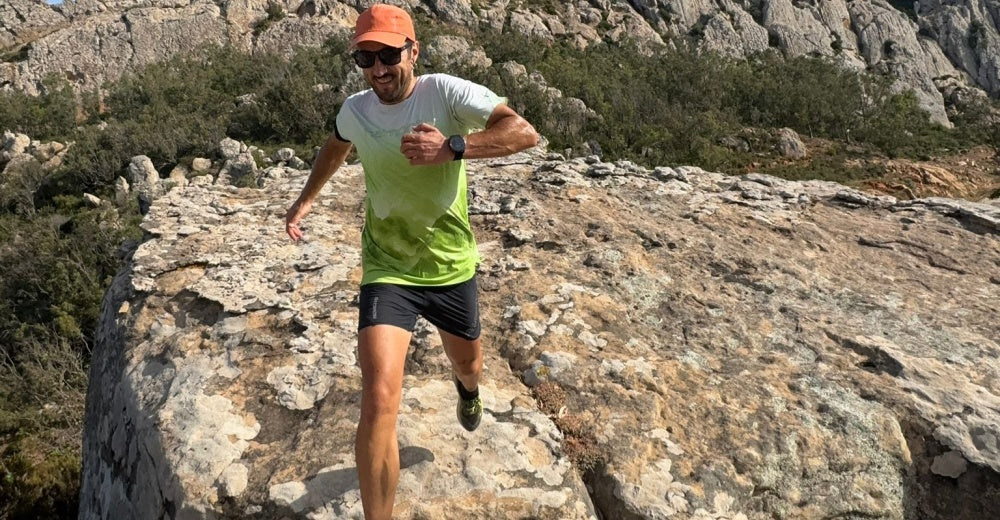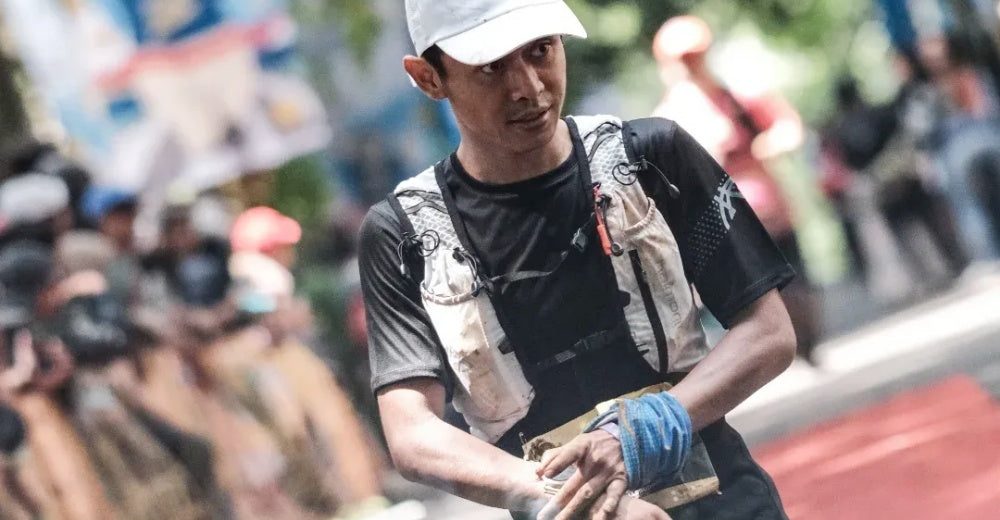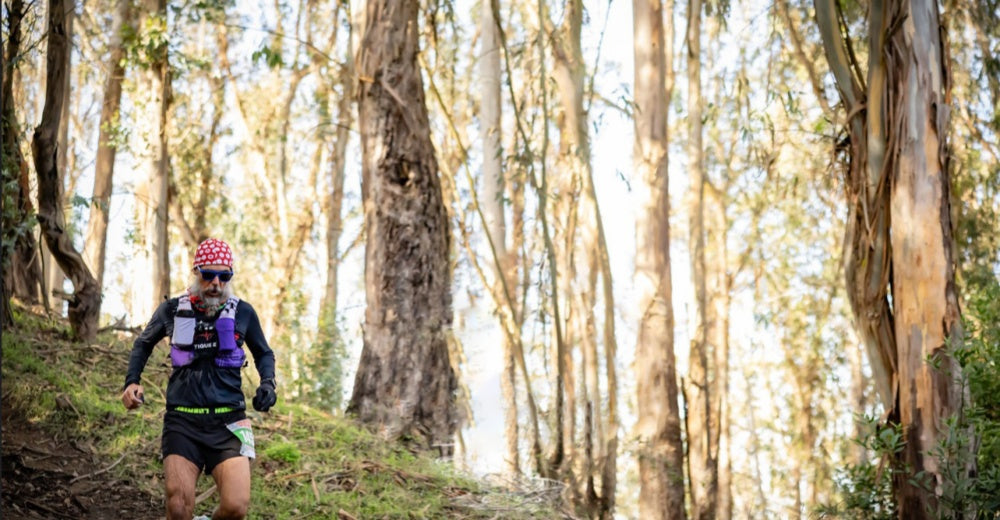Table of contents
Trail running is not only a run through the mountains and forests, but also a journey of self-competition. Unlike the flatness and order of urban marathons, the world of trail running is full of unknowns and variables: steep slopes, muddy forest trails, sudden storms, and gradually exhausted bodies and shaken wills.
You may start to doubt during the 15th kilometer climb: "Can I really finish this race?"
You may panic when night falls and the headlights become weak, and your heart is filled with whispers of "give up".
But you may also be shocked by the starlight when you look back at the top of the mountain, and regain strength when you see the smiles of volunteers in front of the supply station. It is in such situations that we find that the real core competitiveness of trail running is never just speed and heart and lungs, but whether you have a firm, stable and flexible heart when facing challenges.
At Haimont, we always believe that excellent trail runners are not only well-trained physical warriors, but also strong mental warriors. They can stay calm when their physical strength is on the verge of limit, find the restart button on the edge of collapse, and continue to move forward in darkness and loneliness. Because of this, psychological preparation has become the invisible but crucial "invisible equipment" in trail running.

Anticipate difficulties: Psychological construction starts from the preparation period
Real psychological preparation does not start on the day of the competition. It should be part of your entire preparation cycle - just like training physical fitness, psychological toughness also requires systematic training and gradual establishment. Anticipating, simulating and getting used to the difficulties you are about to face is the first step for all trail runners to improve their psychological quality.
What do you need to face?
The reason why trail running is challenging is that it may allow you to "experience four seasons, three emotions, two collapses and one rebirth in the same day." In the competition, you may encounter the following typical difficulties:
- Terrain challenges: continuous steep slopes, gravel and loose soil, technical downhill.
- Sudden climate changes: strong winds, cooling, heavy rain, heat.
- Physical feedback: cramps, gastrointestinal discomfort, energy depletion, insomnia.
- Psychological blows: loneliness, disrupted rhythm, being surpassed, low mood.
Anticipating these difficulties is not to increase fear, but to give you the right to choose and a sense of preparation when facing them in advance.
Method I: Difficulty rehearsal method
During the training period, consciously simulating difficult situations in the competition can effectively enhance psychological stress resistance.
- Simulated high-intensity climbing training: choose a long uphill section, carry a backpack to perform low-pace endurance training, and experience muscle fatigue and psychological torture.
- Deliberately arrange "low-state day training": for example, if you don't get enough sleep the day before or the weather is bad, you still train and get used to moving forward in "bad state".
- Long-distance solo running training: don't look for teammates, don't listen to music, and train your attention and self-talk ability in boredom and loneliness.
Method II: "Worst Script" Writing Exercise
Write down the three situations you are most worried about in the competition (such as: cramps, getting lost, sudden weather changes), and then list **"My coping strategy"** for each scenario, which will greatly reduce their psychological deterrence.
|
Scenario |
Possible Time/Location |
My Coping Strategy |
|
Sudden rain during night run |
Night trail section from CP3 to CP4 |
Wear waterproof windbreaker, switch headlamp to backup mode, slow down for stability |
|
Leg cramps |
Steep slope around the 30KM mark |
Stop to stretch, hydrate with electrolyte drink, take sodium-rich energy gel |
|
Mental breakdown |
Around CP5 |
Reinforce inner mantra: “I still have the strength to go on”, use rhythm songs for focus |
It is recommended to review these "scripts" after training and continuously improve the response strategy so that you can truly "handle even the worst" in the competition.
Method III: Practice "calm response" in training
Many psychological breakdowns in the competition are actually caused by unexpected events that make you "emotionally take over reason". Therefore, it is crucial to simulate emergencies and practice "calm decision-making" in training.
For example:
- The soft flask suddenly broke during training? You need to practice using the spare soft bottle quickly and judge whether to replenish water nearby or continue to move forward.
- Ran the wrong route? Stop, retreat, and reconfirm the navigation immediately, without self-blame or panic.
- Teammate collapsed? Support each other with a calm tone, while taking care of your own pace.
Haimont equipment suggestion: Use a backpack with a rapid zipper side compartment and reflective details to quickly retrieve a windbreaker, navigation card or supply tools in an emergency situation to improve the "sense of control of the scene".
Advance prediction is the first line of defense in psychological training; active simulation is the key to transforming fear into "foreknowledge" and "sense of control". Psychological construction is not a one-time preparation, but like training the heart, lungs and leg muscles, it needs to be accumulated and repeatedly strengthened. trail running is not about "willpower", but "clear cognition + strategic response".
Control the rhythm: psychological stability in emotional ups and downs
In trail running, rhythm is not only the rhythm of the body, but also the main line of emotions. Many runners do not lose in speed, but in "loss of control" - being too excited in the first half leads to a collapse in the latter half, or being depressed and having a chaotic rhythm due to a technical section. Truly strong runners often have the ability to "run calmly": they are stable and not impatient; they are accurate and know when to accelerate and when to stop; their mentality is like the wind in the mountains and forests - not panicking, and having their own direction.
The competition is not a sprint, but a psychological pace battle
Many novice trail runners often consume a lot of physical energy and concentration too early in the early stages of the competition due to emotional excitement or being affected by the rhythm of others, which leads to emotional depression in the middle and later stages, and physical and psychological collapse.
Psychological strategy: "rhythm cooling-off period" in the first 20%
- Tell yourself: "In the first 10 kilometers, I was just 'warming up + observing'."
- Don't compete with people around you, and don't be induced by applause and photography.
- Adjust your breathing rhythm and strengthen your inner statement: "I have plenty of time."
External rhythm control tools: environment + equipment can help you
- Auditory rhythm: Make a playlist and arrange motivational/smooth tracks by kilometer segment (it is recommended to play music with a strong sense of rhythm in the middle and later segments).
- Time rhythm: Set the heart rate or pace reminder of the watch to avoid running around due to subjective state inaccuracy.
- Equipment rhythm: Consciously set a "small equipment action" every 10km, such as: tightening the backpack once, reorganizing the food bag, forming a "micro-ritual" to strengthen the sense of control.
The easiest thing to collapse in the competition is "rhythm", not "physical strength". Learning to control the rhythm is to learn to dominate the mentality of the game. If the rhythm is stable, the heart will be stable; if the heart is stable, the legs will keep moving forward.
Ask yourself: Am I ready to keep the rhythm in the ups and downs of emotions? At each CP point, what will I proactively do to restart my rhythm?

On-the-spot response: Let go of the obsession of "full control" and embrace change
The charm and cruelty of trail running lies in its uncontrollability: the route may be more slippery than expected, the supplies at the supply station may be temporarily replaced, and the body's reaction may be unexpected... If you pursue "everything goes according to plan" psychologically, then any small change may become the fuse of collapse. A truly mature runner knows how to "dance with uncertainty" in the competition and replace anxiety with flexibility.
Accept that "there will be problems in the competition"
No matter how well prepared you are, trail running cannot fully predict all situations. The only thing you can be sure of is: it will definitely go wrong.
Practical strategy: Train "tolerance for change"
- Deliberately choose different weather or unfamiliar routes for training
- Deliberately wear new equipment to adapt in training (try in the middle of preparation, it is not recommended to change core equipment before the race)
- Deliberately let some training have no time or goal, and only focus on "coping status"
Form a "Plan B and Plan C" mindset
Excellent trail runners will prepare multiple plans in their minds, not just relying on a single path. For example:
|
Item |
Plan A (Ideal) |
Plan B (Adaptive) |
Plan C (Worst-case) |
|
Hydration Strategy |
Drink from soft flasks every 10km |
Refill at each checkpoint, carry one soft flask |
Use rainwater, reduce sweating to conserve hydration |
|
Pacing Strategy |
Maintain steady pace throughout |
Adjust by following a target runner |
Walk when necessary, prioritize heart rate recovery |
|
Weather Response |
Overcast and comfortable at 20°C |
Cloudy turning to scattered showers |
Heavy rain and muddy trails |
With a backup plan, you will be more relaxed psychologically because you know "you have a way out."
On-the-spot renunciation: When giving up becomes a better way to move forward
In some extreme situations (such as serious injuries, drastic weather changes, and uncontrollable time nodes), learning to decisively adjust or withdraw from the competition is also a sign of psychological maturity.
- Not every withdrawal is a failure, but a respect for your body;
- Not every slow moment is a loss, but a way to save energy and move towards greater victory.
Haimont recommends leaving a "safety card" in the equipment bag: write down the emergency contact, health status and a "on-the-spot reminder" for yourself - such as "safety first, you can come back to the game."
Mentality adjustment before the finish line and post-race review
The finish line of trail running is often not the most difficult terrain, but it may be the most psychologically tormenting section.
With only three kilometers left to the finish line, you think that moment will be full of excitement and excitement, but the reality is not always the case. Every step you take feels like stepping on a thousand-pound stone. The supplies have long been exhausted. The cheers from the audience are intermittent, and it seems more like a distant illusion.
You know in your heart, "I'm almost there", but the process of "being there" may be longer than all the previous kilometers. You begin to doubt: "Will I not be able to hold on in the last kilometer?", "Should I sprint or drag it slowly?", "Will others see that I'm not in good shape?" - In the last moments of trail running, the real opponent is no longer the terrain or the temperature, but your own imagination.
At this stage, the most important thing to do is not to "sprint with all your strength", but to adjust your mentality and stabilize the rhythm. Don't breathe in a mess; don't walk with your feet; don't let your emotions be pulled. You need to tell yourself: "I have done 90% of it. This is not the time to relax, but the time for me to cross the finish line with dignity and integrity."
Many experienced runners will "write down a sentence before the finish line" before the race and put it where they can see it: tied to their wrists, attached to energy gels, or written on the cloth tape on the outside of the Haimont vest pack. That sentence doesn't have to be grand, for example:
- "Persevere to the end, leaving no regrets."
- "I am here to complete myself, not others."
- "The last kilometer belongs to me."
It is a sense of ritual, and even more of a psychological anchor. When you are about to be swallowed by fatigue, it can pull you back and focus on the "last few steps under your feet" instead of the running thoughts in your mind.
Finally, you see the arch at the end, and the emotions at that moment are often complicated. Excitement, relaxation, tears, and even a sense of emptiness - you have survived the wall, crossed the mountain, and also crossed the self who wanted to give up in the middle of the night.
But trail running does not end at the end. The true growth of runners often occurs in the silent time after the end.
After the race, you sit on the ground, your shoes are full of sand and mud on your body. You start to review: Where is the rhythm messed up? Which supply point is wrong? Which emotions can be detected earlier? This is not a criticism, but a frank communication with yourself.

Excellent trail runners know that post-race review is not just about "reviewing" the race, but about "understanding" themselves. You can write a paragraph, or open the GPS record to see the ups and downs of your pace, or you can communicate with your companions about your respective collapses and cheers.
Sometimes, a review is the starting point for the next surpass.
The end point is not the end, but a coordinate accumulated by love and persistence. And you, from this moment on, will continue to move forward, become stronger, and understand yourself better.
Runners share
Courtney Dauwalter - "Running through the boundary of collapse with a smile"
Courtney Dauwalter is currently one of the strongest female ultra-long-distance trail runners in the world, known for her amazing endurance and unique psychological strategies. She won the Moab 240 (about 386 kilometers) in 2017, beating all the runners - including all the male runners - by a huge advantage of nearly 10 hours.
But behind this victory, it was not all smooth sailing.
In the late night of the second half of the race, she had hallucinations: she saw the bushes turned into small animals, and the ground seemed to be crawling. This is a common sign of psychological collapse under extreme fatigue and sleep deprivation. Faced with this situation, most people would choose to stop and rest, or even quit the race.
But Courtney chose to talk to herself with a unique psychological method - "deceiving fatigue with a smile."** She deliberately smiled at herself, talked to the runners next to her, and told jokes during the race. She believes that as long as the brain believes that "you are not in pain", the body will persist. This psychological "self-deception" helped her successfully get through the most difficult moments.
She said after the race: "That was my most vulnerable time, but also my strongest moment. I didn't defeat others, but I reached the finish line with myself."
Her experience reminds us that when we are on the verge of psychological collapse, we don't have to hold on, we can also use the soft side of human nature - smile, humor, empathy - to support the courage to persevere.
Trail running is never just a road under your feet, but also a mountain in your heart.
You will walk alone in the dark, and you will breathe loudly against the wind on the high ground; you will question yourself, collapse, and after gritting your teeth again and again, you will realize that I am stronger than I thought.
Psychological preparation is not a talent, but a training. And every time you prepare for the race, step out of the mountain pass, hold back your emotions, and persevere to the end, you are polishing the true will of a trail runner.
Haimont believes that equipment can carry energy, and will can achieve distance. We are willing to walk with you not only through every kilometer, but also through every psychological barrier, and become the self who "never gives up" in every game.
The end point is never the end, but the starting point for you to start again.


